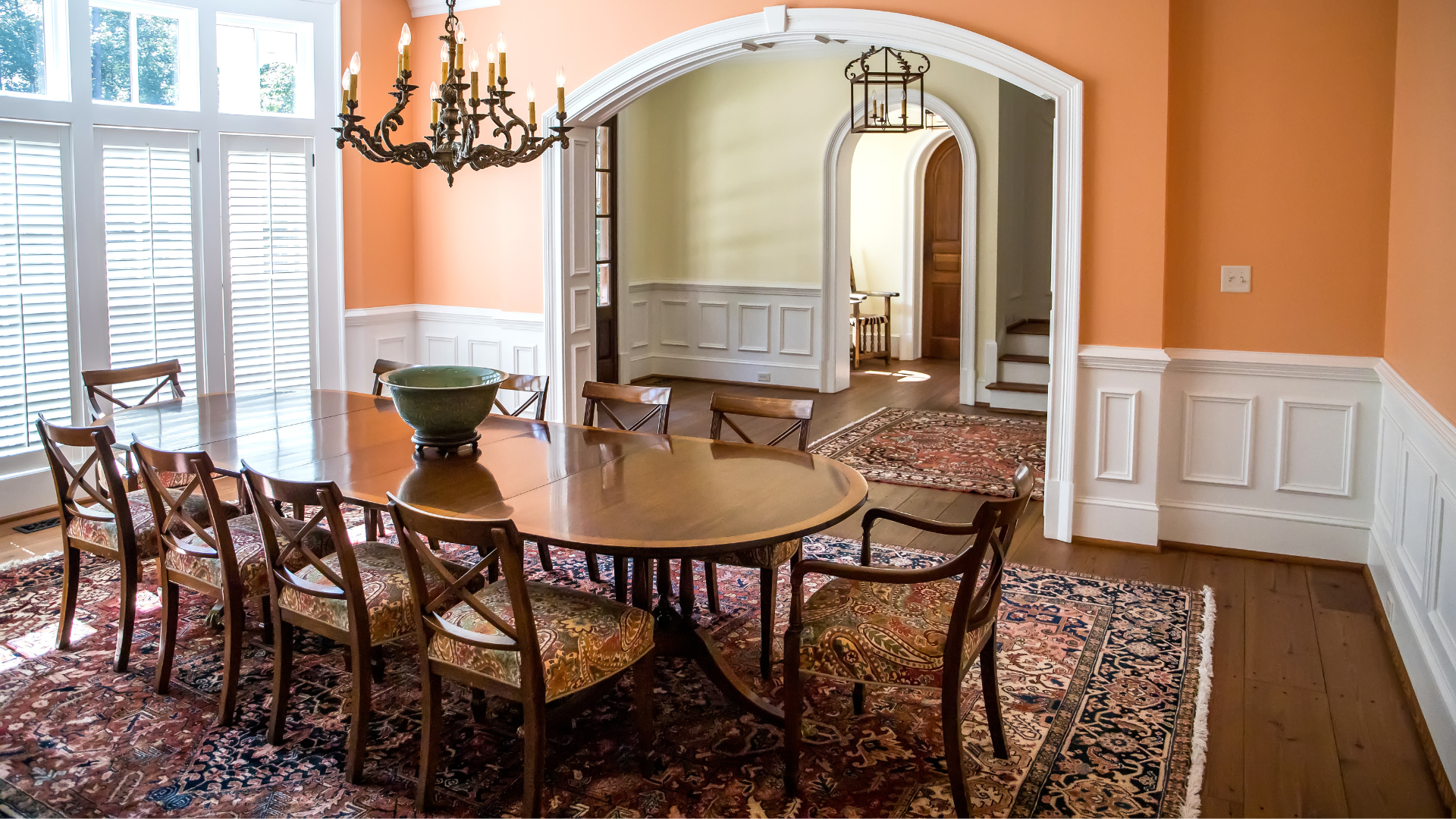If your house has a formal dining room, chances are you don’t use it much. While the dining room was once a focal point in the home—and is still high on some people’s wish lists when house-hunting (70% of home buyers want a dining room, according to the National Association of Home Builders)—studies have shown that few people actually use their dining room for its expressed purpose.
If your house has a formal dining room that is currently a liminal space of dust and shadow, you might wish you could get that space back. Square footage is increasingly expensive and in shorter and shorter supply these days, so reclaiming a room you don’t use or only use a few times a year is obviously an attractive idea. If you don’t have a spare small fortune lying around to change that dining room into something you’ll actually use, don’t worry—there are ways to make that room functional without going broke.
Best alternative uses for a formal dining room
Your first step, of course, is to figure out what you should be using that space for if you’re not going to be hosting dinner parties there. A room right off your kitchen probably isn’t the right choice for a spare bedroom (and that would require possibly closing off the dining room and adding a door, which can be pricey), but there are several ways to make that dining room more useful with the addition of a few pieces of furniture and some smart staging:
Home office. We’re all working from home more often, so turning your dining room into an office space is a useful—and easy—choice. Add a desk, a comfy chair or small couch, a floor lamp, and you’re done.
Library. Do you have bookshelves spread throughout the house? Consolidate them into what was the dining room, bring in some reading chairs, and you’re suddenly fancy with your own home library.
Game room. If you’ve got a pool table, ping-pong table, or arcade games hidden away in your basement, why not bring them up into the light? If your dining room fits a large dining table, it will accommodate something like a pool table easily, and it would be a fun hangout spot while dinner is in the oven.
Craft or hobby room. If you have a hobby—whether it’s scrapbooking, music, or sewing, bring in a sturdy work table and some storage for your supplies and use that space to feed your soul instead of your belly.
Of course, you can use the space any way you want. Once you figure out how you want to use the space, it’s time to transform it. The good news is, you don’t have to spend much (or any) money to accomplish this.
How to convert a formal dining room
One of the first things you’ll need to do is get rid of the low-lying chandelier or pendant light that most dining rooms feature. This light is usually set at about three feet over table height, which is perfect for a seated group but becomes a weird obstacle if the room is used for any other purpose. Replace the light with a cool flush-mounted ceiling light or maybe a less-intrusive (and more useful) fandelier.
Keep in mind that if the dining room light fixture isn’t in the center of the room, you’ll probably want to make that spot the focal point of your new room—place the office desk, library chairs, or gaming table under that light so the space doesn’t look off-balance.
Next, you’ll want to define the space, especially if the dining room opens up to other spaces, like the kitchen or living room. This doesn’t have to be expensive or complicated:
If you’re replacing the dining room table with something equally large, like a pool table or crafting table, that might be sufficient to define the space.
For a home office setup, a large area rug that fills the space can act as an implied boundary that will make the space feel distinct.
Bookcases or other storage can be used to mark off the physical boundaries of a space while acting as a visual clue to the room’s new purpose.
Repurpose built-ins. If your dining room has a built-in china cabinet, hutch, or other storage, tearing them out would be costly and probably unnecessary. Think about what you can store in them instead—files, books, or office/crafting supplies—or how you could use it differently, such as by turning it into a bar.
If you like the idea of gaining a whole new room but you might want the option of occasionally using your dining room, consider some flexible space ideas:
An extensible table that folds up can sit against a wall most of the time and be used for storage, but deployed in a pinch to seat a small dinner party.
If you want a game room most of the time but a dining room once in a while, a combination gaming and dining table like this one might give you the flexibility you want.
If your new room will have a large table in it—for crafting, gaming, or anything else—some folding dining room chairs will keep the space clear when not in use, but will make it easy to revert the space back to its original purpose whenever you need to.
Transforming furniture on casters (like this desk, sidebar, and dining room table in one) will allow you to change the purpose of the space on the fly just by wheeling things around. Combined with some folding chairs in storage, you can bring back your dining room any time you want.
In the end, all that matters is that you use your private space however you want to. If your dining room sees a lot of dinner party action, that’s great—if not, you can change things up.
